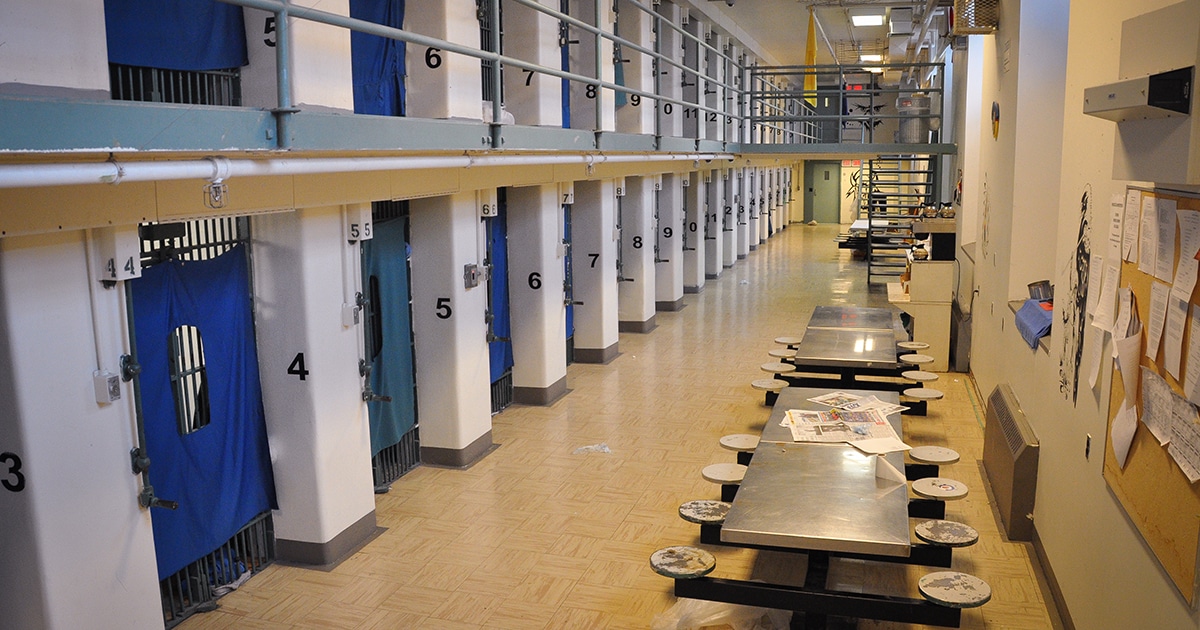The following is the fourth instalment of a multi-part series detailing the work of Anglicans involved in prison ministry. Read Part 1, Part 2, and Part 3. Visit the Anglican Church of Canada website next week for the final instalment.
Before taking on her current role as priest associate at St. Thomas’ Anglican Church in Bracebridge, Ont., the Rev. Barbara Graham lived for 18 years in the Diocese of the Arctic, where her husband served as an Anglican priest. Her time living in the North brought her into close contact with the local Inuit population—an experience that would serve her well in subsequent ministry.
Since 1999, Graham has made regular visits to Beaver Creek Institution, a minimum and medium security federal prison located in Gravenhurst, Ont., to serve on a volunteer basis as a prison chaplain. While offering a monthly Eucharist for all Anglicans in the facility, her prison ministry consists chiefly of work with Inuit offenders.
“To me, it’s very rewarding,” Graham said. “For one thing, it keeps me in touch with those people that we lived among for so many years.”
Recalling her time living in Pangnirtung, Nunavut, she noted, “It really was a small settlement, and you got to know people and they got to know you. They were family, and they still are family to me…I certainly draw on their faith and learn from them, as I hope they learn from me.”
The vast majority of Inuit identify as Anglican. As a result of her own experience, Graham is highly attuned to the unique challenges faced by Inuit inmates, many of which may reflect the experience of inmates from other Indigenous groups.
“They’re far from home, and so then it’s very expensive for them to keep in contact with home,” Graham said. “Another [challenge] is the fact that most of the time, they have to eat food that they’re not normally used to.”
Every so often, the federal government will provide Inuit inmates with food reflecting their traditional diet, referred to as “country food,” such as raw seal, caribou, and fish. Such feasts, however, can be less frequent than desired.
“It’s supposed to be on a regular basis,” Graham said. “But that doesn’t work very well.”
Occasionally, conflicts can emerge between Inuit and non-Inuit offenders. However, Graham said, in keeping with their cultural values, Inuit inmates who are treated in an unkind manner will rarely lash out, but generally will prefer to keep to themselves.
While she speaks some Inuktitut and can converse with inmates in the language, Graham holds weekly Bible studies at Beaver Creek in English, often alongside a version with Eastern Arctic syllabics. The choice of inmates to study in English rather than Inuktitut arises, in part, from the fact that Inuit populations from different regions speak different dialects of Inuktitut.
In supporting the work of prison chaplains engaged with Inuit inmates, Graham highlighted the possibility of future visits from diocesan Arctic bishops to worship with them. Though Arctic bishops have made such visits in recent years, in each case the bishops were Inuit.
“Right now in the Diocese of the Arctic, we have two non-Inuit bishops, but there are many other Inuit canons and [clergy],” Graham said. “If the church can provide some money and some impetus to get those people to come down, even once a year, that would be incredible…[Inmates] ask, ‘When is the bishop coming?’ because they feel cut off.”
Interested in keeping up-to-date on news, opinion, events and resources from the Anglican Church of Canada? Sign up for our email alerts .

